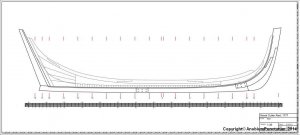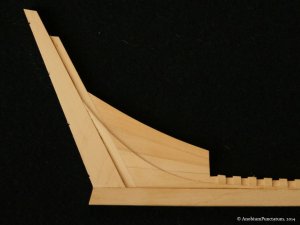- Joined
- Apr 1, 2019
- Messages
- 478
- Points
- 373

 |
As a way to introduce our brass coins to the community, we will raffle off a free coin during the month of August. Follow link ABOVE for instructions for entering. |
 |
 |
The beloved Ships in Scale Magazine is back and charting a new course for 2026! Discover new skills, new techniques, and new inspirations in every issue. NOTE THAT OUR FIRST ISSUE WILL BE JAN/FEB 2026 |
 |


First of all, thank you for your attention. We will try our best to make KIT better.I am getting more and more tempted to also purchase the kit, allthough I already have other plans. Fantastic quality and detailing.
To my opinion you are with this kit the benchmark in the market.First of all, thank you for your attention. We will try our best to make KIT better.


Hello, Anobium Punctatum. This is a very good question. We are trying our best to restore the hull structure. The standard method of making dead wood is very simple for us to process, but it is very demanding for enthusiasts. Our original intention is that most of the enthusiasts can successfully complete. After all, it's just an entry-level product, and we're still doing various tests. Maybe it won't be long before a more resilient KIT can be produced. Thank you very much for your advice.Is this the final design of the kit or have you changed the after deadwood? By this way it's not really possible to get the right shape of the area. There has to be more timber under the part with the steps. In your 3D model this detail looks right.
If you look at the original drawings, Alert did not have a stepped line. It has to be a curved line.
By the original ship the step of bearding line was cut in thicker wood. The deadwood wasn't laminated.
Also with this points, your kit is really well designed.


We are very willing to cooperate with you in this attempt. We will provide the corresponding refitted parts. You can tell me your ideas and requirements. Let's make him more fun together.Hello Trident,
thanks for your answer. With a little bit of cherry or pear wood it's quite easy for an model builder to change this if he want - I am quite sure, that I will do this small change. I am happy if I can get one kit. I have stopped the reconstruction I was working for now.




In fact, what you want to do is what we have been doing. In trying different processing methods and restoring the original structure to the greatest extent, I can provide the specifications of dead wood. But one thing to note is that our existing dead wood has positioning function. If you follow your idea, you may have a lot of questions about rib positioning. You can tell me your original idea, or your solution, and I'll make a difference demonstration on the CAD software so that you can confirm your idea. My English is not very good, and sometimes I can't understand your meaning very well. Please forgive me.Hi Trident,
wow your answer has me really surprised.
I have two different ideas which we can discuss.
1. Let's do it in the original way - which is the most challanging for the model builder (which you also think).
2. Let's make a simplification that nobody will see at the finished model - which is perhaps the better idea for a kit. Can you send me please a foto of the different parts of your after deadwood and a 2d drawing of the deadwood as PN or per mail. How thick are the different parts?
In the drawing you can see my first attempt for a solution of the deadwood, which I did a few years ago.
View attachment 103306
I will add there the necessary parts for the my idea. If you think you can realize this, it would be fine

Many thanks for your support!THE COMENTS BY TRIDENT MODELS IS UNBELIEVEABLE, KEEP IT GOING. Don


In fact, what you want to do is what we have been doing. In trying different processing methods and restoring the original structure to the greatest extent, I can provide the specifications of dead wood.





